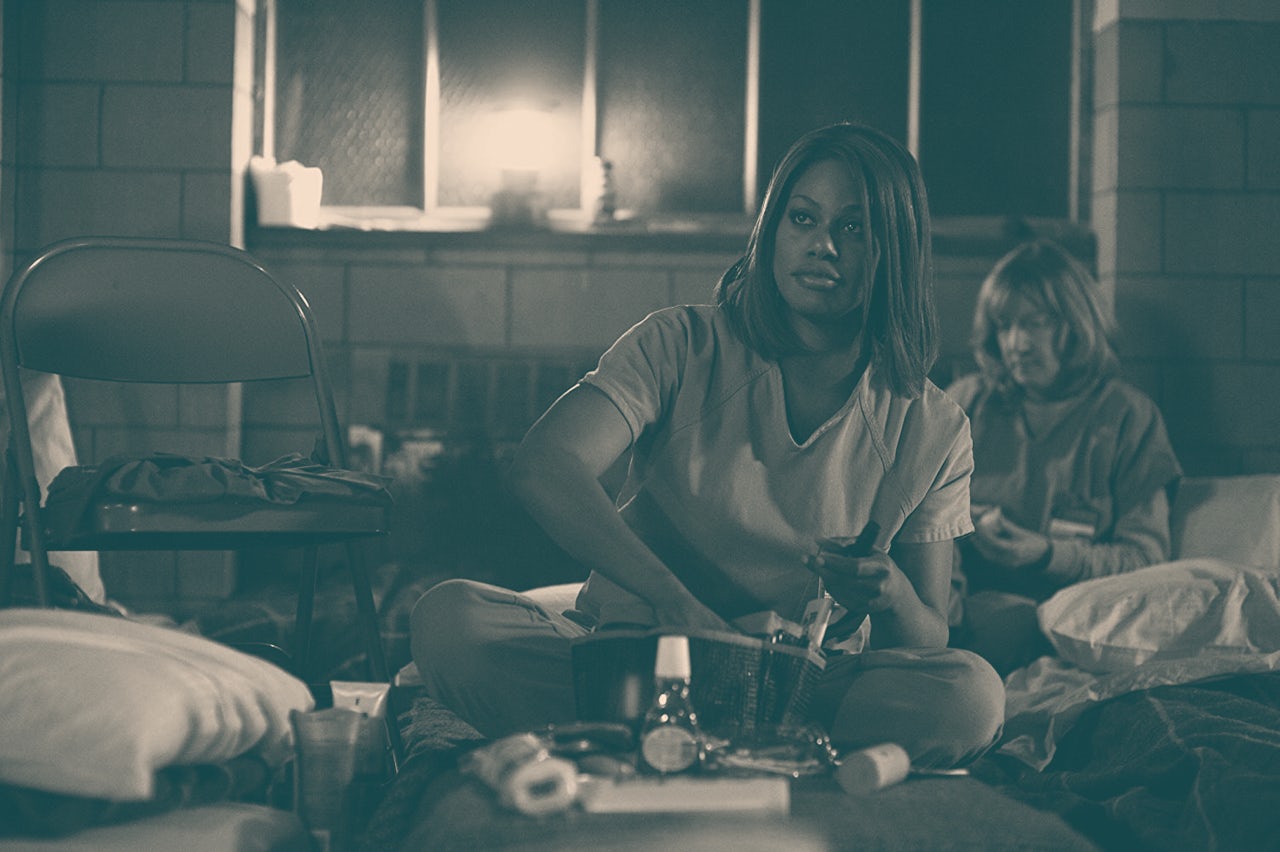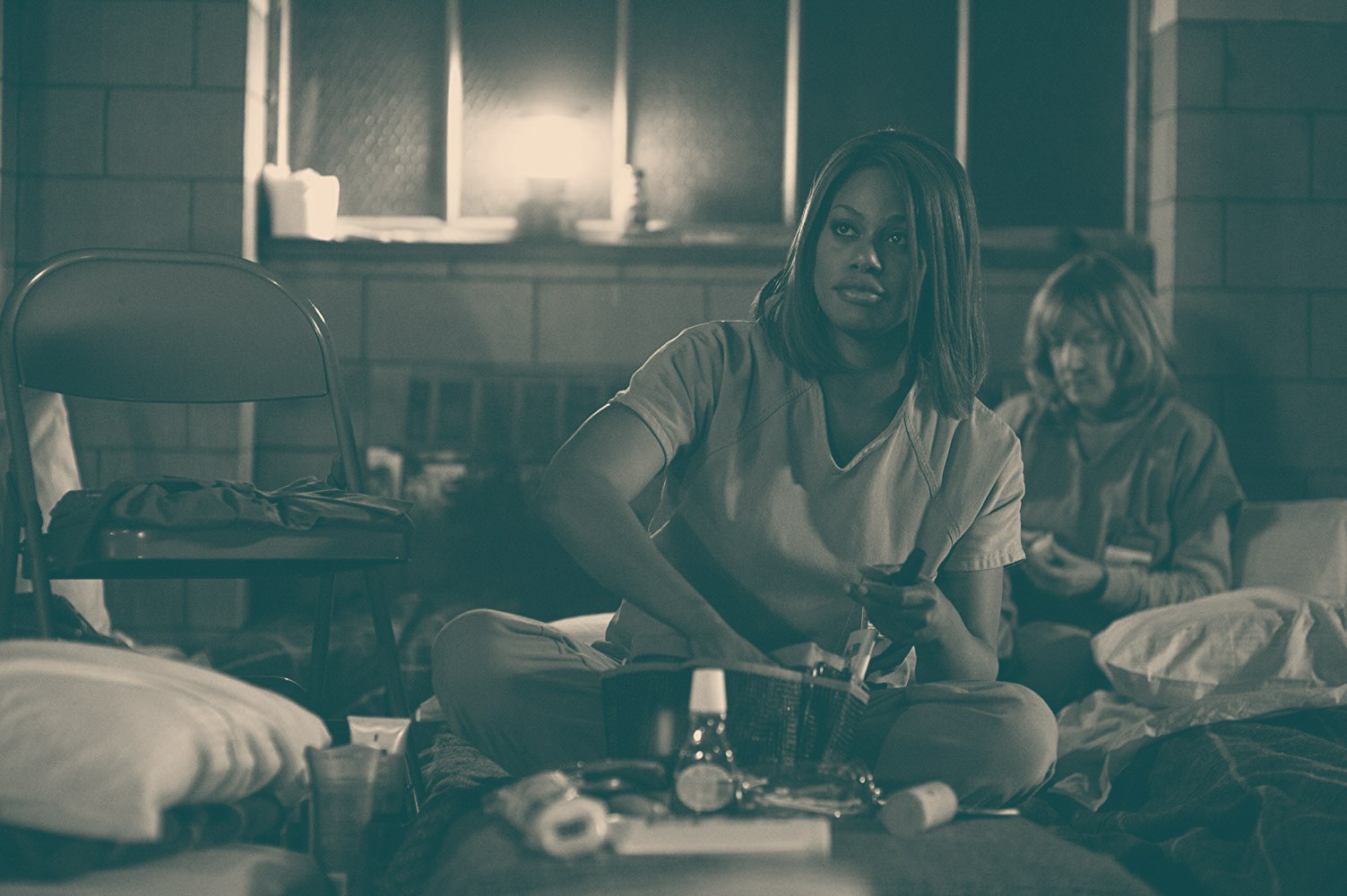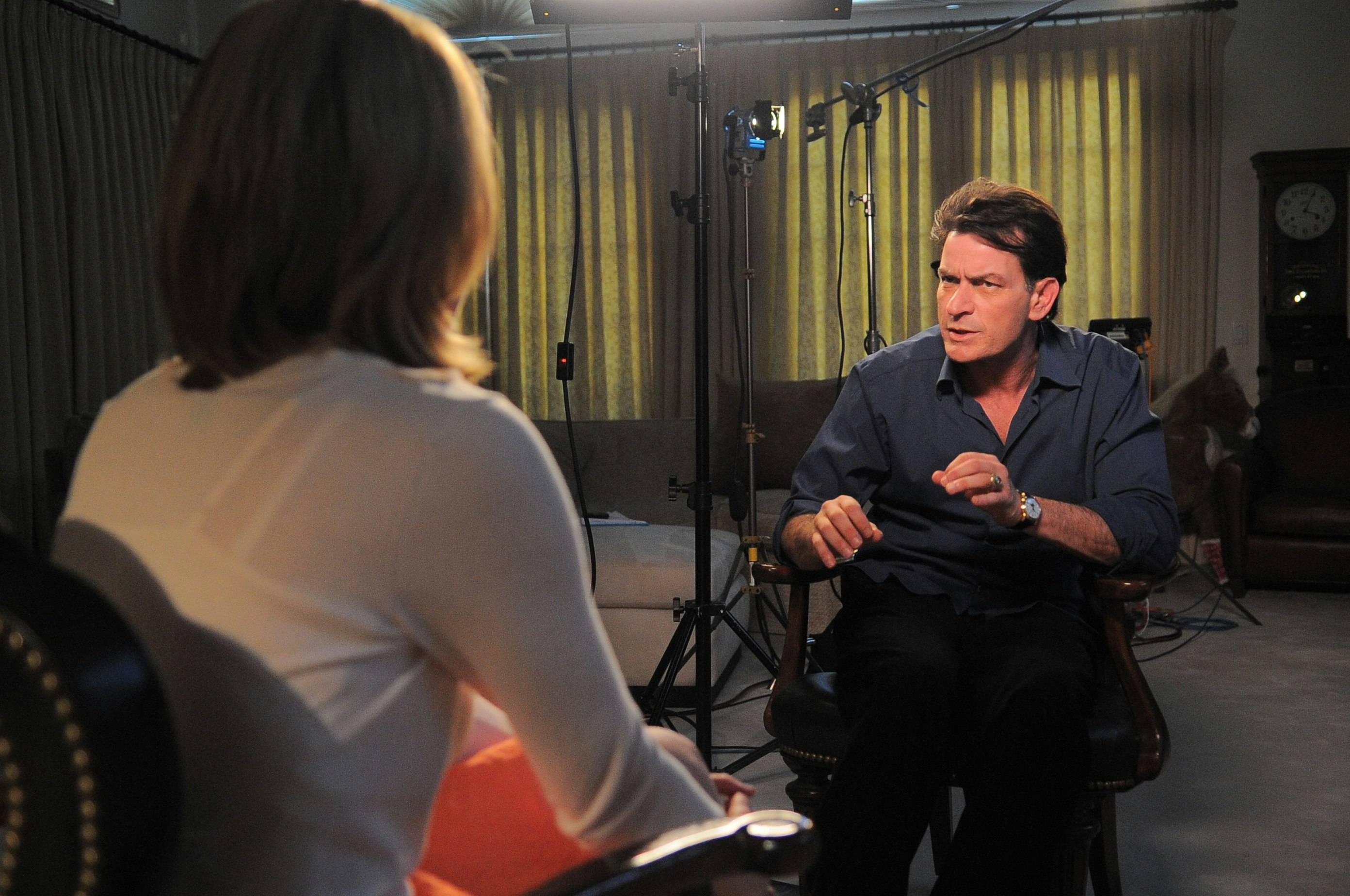When Orange is the New Black’s seventh and final season released this year, the internet flooded with writing both celebrating and criticizing its complicated legacy. Having arrived at a time when Netflix’s forays into original programming were still met with curiosity, Orange helped transform the streaming service from a library of network hits to an original content powerhouse. In her reflection on the series’ end, critic Alison Herman wrote that “the legacy of Orange as a series is inextricable from the rise of Netflix as a platform” — with much of that rise thanks to the series’ diversity, and its resulting ability to tell stories about race, gender, and sexuality that would rarely be deemed worthy of TV airtime. Orange felt like a glimpse into the possibility of what Netflix, and by extension streaming TV as an industry, might be able to offer viewers who were tired of the status quo.
Just as Orange’s rise is inextricable from Netflix’s, Laverne Cox and her character on the series, Sophia Burset, are inextricable from the rise of contemporary trans representation. Cox was not the first trans woman to play a major role on TV — as one example, she was preceded by Candis Cayne on ABC’s Dirty Sexy Money in 2007 — but she was the first to instantly enter the lives of 40 million Netflix subscribers in a season of TV you could consume in a day. Her story wasn’t unfolding week by week, hesitantly acclimating viewers to the idea of a trans character. Neither was it worrying about whether her role might cause ratings to slip. Sophia was as unapologetic about her identity as the series was about her presence. In retrospect, this feels like the bare minimum — but at the time, it felt like an unprecedented victory.
Before Orange, trans women on TV were most commonly found on autopsy tables or as the punchlines of cruel jokes, thanks in large part to the transphobic histories of mainstream hits like CSI and Friends. Positive roles — let alone exciting and nuanced ones — were a rarity. The first time I ever saw a trans woman depicted on TV was in a now-notorious episode of Family Guy that aired in 2010. In it, a character vomits for an extended sequence after learning a woman he slept with was trans, a scene played for uncritical laughs.
These kinds of stories, no matter how egregious, were merely a reflection of the very real and very dangerous way the world regards trans people, and for a long time I had little expectation that TV would learn to treat the trans community as human beings if the average stranger couldn’t manage it. But watching Sophia coming out to her wife, navigating a changed relationship with her son, and making desperate choices to live her truth felt like moments with the capacity to have a resounding cultural impact. Netflix, it seemed, could right some of the industry’s long standing wrongs, and become a home for the kinds of complex, honest stories many trans people were desperate to see.
In a 2014 cover story featuring Laverne Cox, Time declared that American culture had reached its “transgender tipping point.” Orange, and by extension Netflix, had helped to usher in an Obama-era swell of progressive optimism, one which took the sudden public emergence of trans celebrities as a sign that the times were truly changing. Both Transparent and I Am Jazz soon premiered to massive acclaim; Janet Mock wrote a bestselling book about her identity; Andreja Pejić appeared in major fashion campaigns; Caitlyn Jenner spoke out about her long journey to self-acceptance. There was an undeniable and unprecedented energy behind mainstream trans representation, which writers, critics, and activists posited as the forebear of tangible change.
Meanwhile, all signs pointed to Netflix continuing its push toward unconventional storytelling in 2015, when it released Sense8. Focusing on a “cluster” of eight strangers from around the world who develop a psychic link that lets them see into each other’s lives and inhabit each other’s bodies, the series was fascinated with questions of how community can transcend individuality. In the midst of its sometimes messy, expositional plotting were deeply profound moments, many of them tied to Nomi Marks, one of the series protagonists — a trans woman portrayed by Jamie Clayton. In Nomi’s first major scene, she’s being topped by her girlfriend with a rainbow strap-on. As with Sophia, no apologies were going to be made for putting a trans woman on screen in an honest light. Her storyline ultimately found her confronting her transphobic parents, playing an essential role in the survival of her friends, and processing the trauma of dysphoria and abuse.
It’s perhaps obvious to say that these are not things we often get to see trans women do on TV, even now, but what made Nomi even more special was that her narrative was shaped by two trans women. At the time, series co-creator Lana Wachowski had been public about her trans identity for about three years, while her sister Lilly would come out in 2016. Their helming of the series felt like yet another step toward a world where trans stories could not only be told with empathy, but with the kind of honesty that only comes with lived experience.
“Netflix is out there dancing to its own drumbeat. I can feel a momentum shift,” Freema Agyeman, who played Nomi’s girlfriend Amanita, toldPink News when the series debuted. It was a sentiment that felt undeniable when witnessing the bold choices Netflix was allowing its creators to make. What some failed to anticipate, though, was where that shift in momentum was ultimately headed — and whether or not it might be sustainable. In 2018 came the first signs the bubble had burst. "We've thought long and hard here at Netflix to try to make it work but unfortunately we can't,” Netflix wrote in a June 2018 statement in which they announced that Sense8, following its second season, would not be picked back up.
Then came a sweep of cuts to minority-centered shows: One Day at a Time, which included a non-binary character, was cancelled in March of this year, followed by women-led animated series Tuca and Bertie in July. This trend continued with The OA’s end being announced in August. The series, a cerebral exploration of community and reality, had featured a young trans man portrayed by Ian Alexander. Having been extremely beloved by its fans, its cancellation made par-for-the-course outrage snowball into a much larger movement; viewers not only spoke out on social media, but organized demonstrations and flash mobs in desperate attempts to revive the series, which lasted only two seasons.
As this stream of high-profile cancellations was met with increasingly bad publicity, it appeared Netflix was stuck between the desires of subscribers and determinations gleaned from their notoriously opaque viewership data. Fans felt Netflix was giving up on its most challenging properties, but had blank checks ready for more Stranger Things and Adam Sandler movies, a trend epitomized by an infamous $100 million deal to keep streaming Friends. Some also began to point out discrepancies in how Netflix shows with minority creators and casts were being treated — with most of them seemingly getting less attention from Netflix’s algorithms, along with far fewer marketing dollars.
In response, Netflix worked tirelessly to counteract any notions that they are a soulless corporation. To appease fans of Sense8, they produced a truncated finale to provide closure on its many storylines. They’ve launched internal diversity initiatives, with rainbow logos to boot. And in perhaps their most derided attempt to appeal to upset fans, they expressed their condolences to viewers who felt represented by One Day at a Time via tweet, opining that “We must continue to find ways to tell these stories.” Notably, they acknowledged that representation should be about more than just numbers — while simultaneously basing their decision on numbers. “Simply not enough people watched to justify another season,” they wrote. Like any corporation that wants to keep customers endeared, they have a vested interest in appearing as an altruistic cause, dedicated to a mission statement more than money. So, how do you make a politically forward-thinking, LGBT inclusive image coexist with demanding financial stakes and an ever-more-crowded field of competitors?
The third season of Designated Survivor hit the streaming service in July, following two seasons on ABC. In becoming a Netflix original, the series transformed both its cast and the stories it was interested in telling. Putting immigration, sexual health, and trans issues at the forefront, it made an attempt not just to entertain but to educate, which often forced its marginalized characters to act as avatars for controversial issues. Jamie Clayton, who portrayed Nomi in Sense8, appeared for the first time in season 3 as Sasha, the trans sister-in-law of President Tom Kirkman (played by Kiefer Sutherland). Her identity is used by Kirkman’s political rivals to undermine his reelection campaign, and his dithering over voicing support for her runs throughout the season.
“I will admit to all of you that my tolerance and acceptance of her took time, and even now is more intellectual than instinctive,” he tells the nation, in a supposedly uplifting and unifying address. Rather than being an arc about Sasha or her desires, her storyline felt entirely disempowered — and interested only in how other people weaponize, process, and at best, cautiously accept her. Designated Survivor was soon cancelled for the second time, to little dismay.
What sort of flattening and simplification will it take, in this new era, for a trans character to make it to the screen?
In seeing how both Netflix’s more daring and more centrist versions of telling trans stories have failed by the company’s own account, broader questions about representation come into focus — in particular, what purpose it now serves in a world where the “transgender tipping point” has come and gone. Trans people are now acknowledged by contemporary media and politics — for better or worse — in a way that would have been difficult to imagine before we got our first glimpse of Sophia six years ago. But if the end of Orange is the New Black marks the end of an era for Netflix, it also marks a massive shift in the relationship of trans viewers to on-screen representation. Gone, it seems, is Orange’s initial promise that Netflix, and streaming altogether, could be a freer, more daring, and more challenging version of TV. Also gone is the faith of trans people that being portrayed in a more positive light by mainstream media was a key to changing the precarious circumstances much of the community remains within.
The desire to be seen can — and likely often does — coexist with the desire for the community at large to be safe, housed, and cared for. But representation is moving away from the center of trans politics, replaced by more pertinent issues facing the most vulnerable members of the community, and rightly so. Sophia Burset didn’t lead to the end of trans women of color being incarcerated at higher rates. Nomi Marks didn’t lead every parent of a trans child to welcome them with open arms. The sudden burst of trans characters on other platforms in series like Transparent, Pose, and Euphoria haven’t made the majority of cis people realize that the wellbeing of trans people is a cause worth fighting for. These are obviously aims too great to place on the backs of a single character, series, or platform. And yet, Netflix’s “commitment” to diversity communicates to us that representation should be accomplishing something — but what?
The greatest change ultimately brought about by Netflix — and by other corporations touting inclusivity — was their own ability to imagine trans people as consumers, as cultural influencers, and as profit potential. This has undoubtedly led to more jobs for trans people in industries from which they were once almost entirely absent, but it does little to impact the legislative, social, and economic failures that have robbed so many trans people of the justice they deserve. And so the question remains as to what Netflix’s role will be, or should be, as we inevitably move into a new era of trans storytelling largely informed by the platform's own influential successes and shortcomings.
I can’t abandon the belief that narratives about trans people remain as important now as they were before any “tipping point,” real or imagined. But when it comes to those stories appearing on mainstream platforms, their presence should be considered worthy of skepticism prior to celebration. What sort of flattening and simplification will it take, in this new era, for a trans character to make it to the screen? Of course, no story will ever be perfect enough to upend the bigotry of our culture as we know it. But why settle for inclusion on someone else’s terms, or to serve someone else’s agenda? The untold realities of trans life, both extraordinary and mundane, deserve to be told by the community, for the community — and we’re just now on our way to discovering what that could truly mean.





